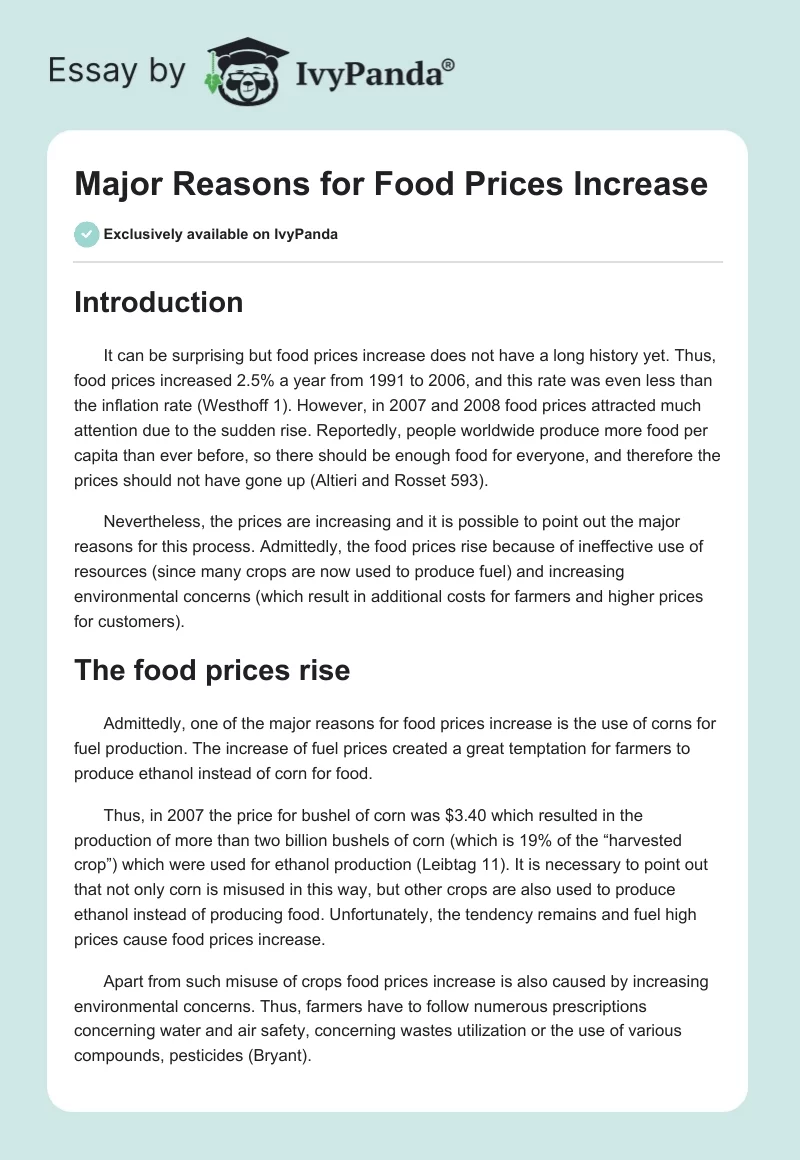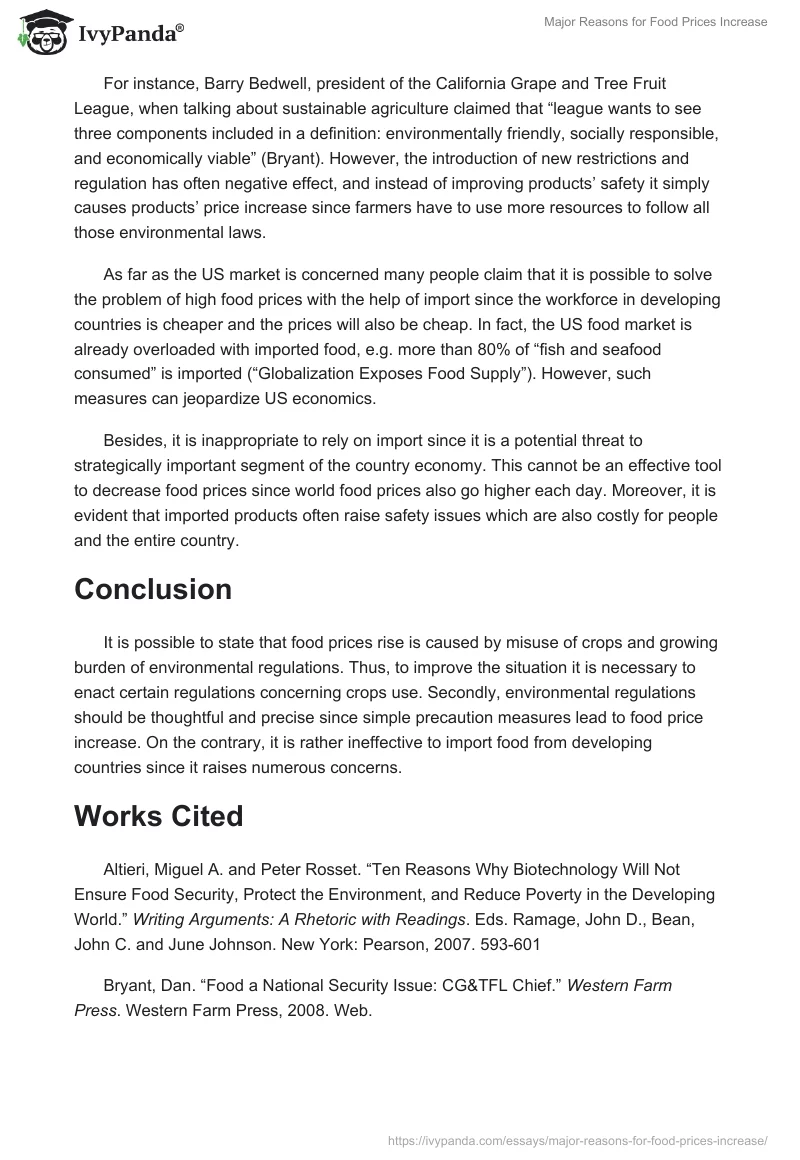Introduction
It can be surprising but food prices increase does not have a long history yet. Thus, food prices increased 2.5% a year from 1991 to 2006, and this rate was even less than the inflation rate (Westhoff 1). However, in 2007 and 2008 food prices attracted much attention due to the sudden rise. Reportedly, people worldwide produce more food per capita than ever before, so there should be enough food for everyone, and therefore the prices should not have gone up (Altieri and Rosset 593).
Nevertheless, the prices are increasing and it is possible to point out the major reasons for this process. Admittedly, the food prices rise because of ineffective use of resources (since many crops are now used to produce fuel) and increasing environmental concerns (which result in additional costs for farmers and higher prices for customers).
The food prices rise
Admittedly, one of the major reasons for food prices increase is the use of corns for fuel production. The increase of fuel prices created a great temptation for farmers to produce ethanol instead of corn for food.
Thus, in 2007 the price for bushel of corn was $3.40 which resulted in the production of more than two billion bushels of corn (which is 19% of the “harvested crop”) which were used for ethanol production (Leibtag 11). It is necessary to point out that not only corn is misused in this way, but other crops are also used to produce ethanol instead of producing food. Unfortunately, the tendency remains and fuel high prices cause food prices increase.
Apart from such misuse of crops food prices increase is also caused by increasing environmental concerns. Thus, farmers have to follow numerous prescriptions concerning water and air safety, concerning wastes utilization or the use of various compounds, pesticides (Bryant).
For instance, Barry Bedwell, president of the California Grape and Tree Fruit League, when talking about sustainable agriculture claimed that “league wants to see three components included in a definition: environmentally friendly, socially responsible, and economically viable” (Bryant). However, the introduction of new restrictions and regulation has often negative effect, and instead of improving products’ safety it simply causes products’ price increase since farmers have to use more resources to follow all those environmental laws.
As far as the US market is concerned many people claim that it is possible to solve the problem of high food prices with the help of import since the workforce in developing countries is cheaper and the prices will also be cheap. In fact, the US food market is already overloaded with imported food, e.g. more than 80% of “fish and seafood consumed” is imported (“Globalization Exposes Food Supply”). However, such measures can jeopardize US economics.
Besides, it is inappropriate to rely on import since it is a potential threat to strategically important segment of the country economy. This cannot be an effective tool to decrease food prices since world food prices also go higher each day. Moreover, it is evident that imported products often raise safety issues which are also costly for people and the entire country.
Conclusion
It is possible to state that food prices rise is caused by misuse of crops and growing burden of environmental regulations. Thus, to improve the situation it is necessary to enact certain regulations concerning crops use. Secondly, environmental regulations should be thoughtful and precise since simple precaution measures lead to food price increase. On the contrary, it is rather ineffective to import food from developing countries since it raises numerous concerns.
Works Cited
Altieri, Miguel A. and Peter Rosset. “Ten Reasons Why Biotechnology Will Not Ensure Food Security, Protect the Environment, and Reduce Poverty in the Developing World.” Writing Arguments: A Rhetoric with Readings. Eds. Ramage, John D., Bean, John C. and June Johnson. New York: Pearson, 2007. 593-601
Bryant, Dan. “Food a National Security Issue: CG&TFL Chief.” Western Farm Press. Western Farm Press, 2008. Web.
Leibtag, Ephraim. “Corn Prices Near Record High, But What About Food Costs?” Amber Waves 6.1 (2008): 11-15.
“Globalization Exposes Food Supply to Unsanitary Practices.” Medical News Today. Medical News Today, 2008. Web.
Westhoff, Patrick. The Economics of Food: How Feeding and Fueling the Planet Affects Food Price. Upper Saddle River, NJ: FT Press, 2010.


